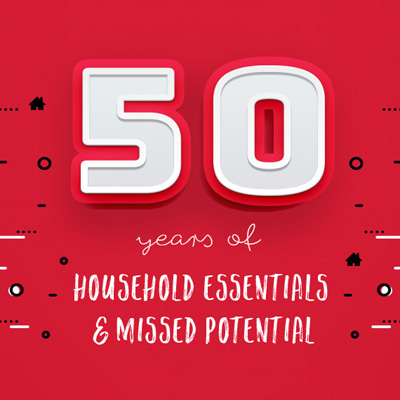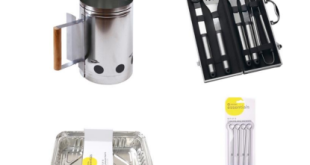 Homeserve has compiled a list of technology hits and misses over the last 50 years.
Homeserve has compiled a list of technology hits and misses over the last 50 years.
The home assistance provider said: “For every successful, innovative product or gadget, there are at least another 10 that didn’t take off. Sometimes inventions come along and solve five problems at once, while others attempt to deal with problems nobody knew they had.”
Here is Homeserve’s commentary of the best and worst:
1960 – HIT
The Countertop Microwave
‘When the first domestic microwaves were released in Britain in 1959, they were heavy and very expensive. At the start of the decade, few people owned them and they were viewed as a luxury item.
‘As the popularity of freezers and ready meals grew towards the end of the 1960s, the microwave became more of an everyday sight in home kitchens. Today over 80% of UK households own one.’
1960 – MISS
The Cat-Mew Machine
‘Designed to instil fear into rodents, the Cat-Mew Machine was powered by a 2 watt motor and plugged into the wall.
‘The device was capable of emitting an approximation of a ‘meow’ up to 10 times a minute. Each ‘meow’ was accentuated by the bright red flashing eyes. This machine didn’t find a permanent place in our homes.’
1970 – HIT
The Food Processor
‘The first food processor was exhibited in Paris in the early 70s and was an instant success. The idea was picked up and refined by a number of companies, and soon there were a variety of versions available.
‘These 1970s designs included the 16-speed blender in three of the most fashionable colours of the time: white, parsley green or curry yellow. This time-saving device is still used in a huge majority of kitchens today.’
1970 – MISS
Teasmade
‘The Teasmade consisted of an alarm clock, teapot and kettle. At a set time, the kettle would begin boiling the water, and then transfer it into the teapot. When the alarm clock went off, there was a fresh cup of tea waiting next to the bed.
‘Nearly two million households once owned one of these contraptions, but as the UK began to prefer a morning coffee, their popularity declined. These days boiling water is mostly kept in the kitchen – although the Teasmaid does still have a following.’
1980 – HIT
The Mobile Phone
‘Ofcom [the independent regulator and competition authority for the UK communications industries] reported that in 2016 over 90% of adults in the UK owned a mobile phone and over 70% were smartphones.
‘Back in 1983, when Motorola released the first ever commercial mobile phone, it offered 30 minutes of talk-time, six hours on standby and had enough memory to store up to 30 phone numbers. It was quite pricey though, at £2,639.
‘Today the mobile phone is a multi-tasking device that most of us have within arm’s reach all day, every day.’
1980 – MISS
The Pocket TV
Back in the 1980s, you needed really big pockets.
‘Although you could argue that it was before it’s time, the available technology hadn’t quite caught up with this idea.
‘The analogue signal could be difficult to pick up on your home TV set, so trying to pick up a signal on the move with a portable TV set was always going to be tricky.
‘Today nobody is carrying around a mini television set in their pocket, but smartphones have turned this idea into useable technology.’
1990 – HIT
The Internet
‘None of us would be here without it. From cat pictures and selfies to online shopping and banking, the internet is now an integral part of modern life.
‘The dot-com boom in the 1990s saw businesses capitalising on this new technology by building their own websites. Today, around 3.5 billion people have access to the internet.’
1990 – MISS
The Microwave Bank
‘Ever wished you could pay your bills on the same device that’s heating up your dinner? If the speedy cooking times of the microwave still left you a little impatient, this technology meant you could multitask while heating up your meal for one.
‘Offering online banking, as well as TV, shopping and recipe suggestions, you could really make the most of those two and a half minutes.
‘Despite the later invention of the internet fridge in the 1990s, banking while cooking didn’t really whet anyone’s appetite. And, perhaps unsurprisingly, this radioactive invention never quite took off.’
2000 – HIT
The Kindle
‘You can carry around 3,500 books you’ll never actually read. The Kindle wasn’t the first technology of its kind, but it is undoubtedly the most successful.
‘With a vast library of over 1.5 million titles available, the Kindle has, for some, revolutionised reading, making books more readily accessible.
‘It has freed up shelf space in our homes and lightened the load in our suitcases. Reading on your morning commute is now easier than ever.’
2000 – MISS
The TwitterPeek
‘The TwitterPeek is a device that does nothing but sends Tweets.
‘While there is some merit in a device only doing one thing, and doing it perfectly, reviews of the TwitterPeek don’t seem very promising.
‘Twitter is essentially a text messaging-based service, meaning you can use it from any mobile phone, not just smartphones. With the proliferation of mobile phones mentioned earlier, there doesn’t seem to be a need for a device that costs the same, yet only has one function.’
2010 – HIT
Smart Thermostats
‘These give you remote access to your central heating so you don’t have to think about it.
‘With so many of us constantly on mobile phones, it made sense to inventors to use this technology to improve another aspect of our lives.
‘Smart thermostat technology uses information sent from smartphones to automatically set central heating systems to your preferences. Its super intelligent software learns your daily routine, automatically switching your heating on and off as you come and go.’
2010 – MISS
Egg Minder
‘This is an egg tray, fitted with LED lights, that connects wirelessly to your smartphone.
‘The device sends you notifications to tell you how many eggs you have left in your kitchen, and which of them is the oldest. The tray, which holds 14 eggs, is battery-powered. The Internet of Things hasn’t quite cracked it with this one.’
The future – HIT
Connected homes
‘Technology is edging its way into all parts of our lives. Some of this tech is superfluous, but the majority will help make our lives easier. Our homes will start working for us, sending us notifications and alerts when something isn’t quite right.
‘There is technology available that’s already pretty smart. LeakBot is a clever little device that you simply clip onto your water supply pipe to detect hidden leaks before they become an issue. The device alerts you of a leak via a message on your smartphone.
‘Kitchen appliances you can control with your smartphone are already on the market. In the not so distant future, this technology will only improve, and you’ll be able to control everything in your home from your mobile device.’
The future – MISS
Wearable tech: Smart finger rings
‘Beautiful maybe. Useful? Probably not.
‘Technologically advanced jewellery is fairly common now, and as the majority is designed to monitor fitness levels, the advantages are clear.
‘So could smart rings be the future? This finger ring allows you to control some of your phone’s settings by simply tapping or swiping the surface of the ring. Unless you have unusually dexterous fingers, you’ll be using your opposite hand to make these gestures.
‘Essentially, the smart ring lets you control your phone remotely with two hands instead of holding and controlling it with one.’
 Housewares Business-to-business magazine for housewares retailers and their suppliers
Housewares Business-to-business magazine for housewares retailers and their suppliers



